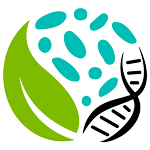Transgenic American chestnuts show enhanced blight resistance and transmit the trait to T1 progeny
Andrew E. Newhouse, Linda D. Polin-Guigan, Kathleen A. Baier, Kristia E.R. Valletta, William H. Rottmann, Timothy J. Tschaplinski, Charles A. Maynard, and William A. Powell
13 April 2014, Plant Science 228: 88-97; DOI: 10.1016/j.plantsci.2014.04.004
Abstract
American chestnut (Castanea dentata) is a classic example of a native keystone species that was nearly eradicated by an introduced fungal pathogen. This report describes progress made toward producing a fully American chestnut tree with enhanced resistance to the blight fungus (Cryphonectria parasitica). The transgenic American chestnut ‘Darling4,’ produced through an Agrobacterium co-transformation procedure to express a wheat oxalate oxidase gene driven by the VspB vascular promoter, shows enhanced blight resistance at a level intermediate between susceptible American chestnut and resistant Chinese chestnut (Castanea mollissima). Enhanced resistance was identified first with a leaf-inoculation assay using young chestnuts grown indoors, and confirmed with traditional stem inoculations on 3- and 4-year-old field-grown trees. Pollen from ‘Darling4′ and other events was used to produce transgenic T1 seedlings, which also expressed the enhanced resistance trait in leaf assays. Outcrossed transgenic seedlings have several advantages over tissue-cultured plantlets, including increased genetic diversity and faster initial growth. This represents a major step toward the restoration of the majestic American chestnut.
Citation
Andrew E. Newhouse, Linda D. Polin-McGuigan, Kathleen A. Baier, Kristia E.R. Valletta, William H. Rottmann, Timothy J. Tschaplinski, Charles A. Maynard, William A. Powell, Transgenic American chestnuts show enhanced blight resistance and transmit the trait to T1 progeny, Plant Science, Available online 13 April 2014, ISSN 0168-9452

